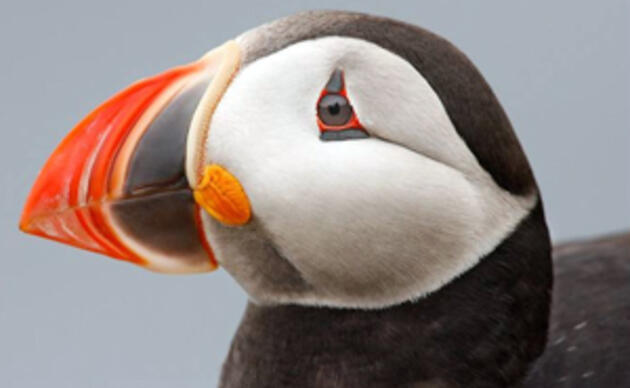Discovery Result of Audubon’s 17-year Effort to Restore the Penguin-like Seabird to Maine Coastal Islands
For the first time in more than a century, a Common Murre (Uria aalge) egg has been discovered south of the Canadian border, boosting hope for the success of valiant efforts to restore the species. The rare egg was discovered by an intern working for Audubon’s Seabird Restoration program on Matinicus Rock, one of 50 islands in Maine Coastal Islands National Wildlife Refuge.
"We are absolutely elated. This is a small egg, but with a big promise," said Dr. Stephen Kress, director of the Seabird Restoration Program."We have high hopes for the successful hatching and fledging of this egg, and for greater numbers of murres in years to come."
The egg marks the first time since 1883 that the species, which spends most of its life at sea, has nested south of the Canadian border on the U.S. east coast. It was discovered on a rocky cliff by internMaria Cunha, after she noticed a pair of murres in typical incubating posture.. The nest was surrounded by about 50 murre decoys, and artificial eggs, and close to a sound system that emits murre calls to encourage the long-absent birds to establish new nests.
While widespread on the Pacific coast from Alaska to California, and breeders in Canada’s Maritime Provinces, Common Murres were eliminated from their Maine breeding sites in the 1800s by people hunting the birds for food. Collecting of eggs—a popular pursuit at the time—may also have contributed to the disappearance. Common Murres are especially vulnerable to oil spills and predation, so new colonies within their historic range offer the best assurance for their survival.
Audubon and partners from the Maine Coastal Islands National Wildlife Refuge have spent 17 years trying to bring the Common Murres back to the islands. Regardless of the fate of this specific egg, its presence signals a success story in the making.
"Each new colony offers another margin of safety for Common Murres and other seabirds," said Kress. "The return of the Common Murre to its long-lost nesting grounds shows that conservation works – even against great odds."
Common Murres are not the first seabird species that Kress and his team have helped restore to Maine. Pioneering the use of decoys and sounds now employed to attract the Murres, the team began working to attract Atlantic Puffins to the Maine coastal islands in 1973; four breeding pairs nested at Eastern Egg Rock in 1981, after an absence of nearly a century. Today, Project Puffin protects more than 42,000 of Maine’s rarest seabirds on thirteen islands. Their techniques have also helped establish 12 new tern colonies in Maine and are proving useful for helping endangered seabirds in California, the Galapagos Islands of Ecuador, and Japan. At least 40 seabird species in 12 countries have benefited from seabird restoration techniques developed by Audubon.
Learn about birds and take action
Adopt-A-Puffin
Adopt now and receive a Certificate of Adoption, along with a biography of "your" puffin!
Visitor Center
The Project Puffin Visitor Center (PPVC) is located at 311 Main Street in downtown Rockland, Maine. The center opened its doors officially on July 1, 2006.



